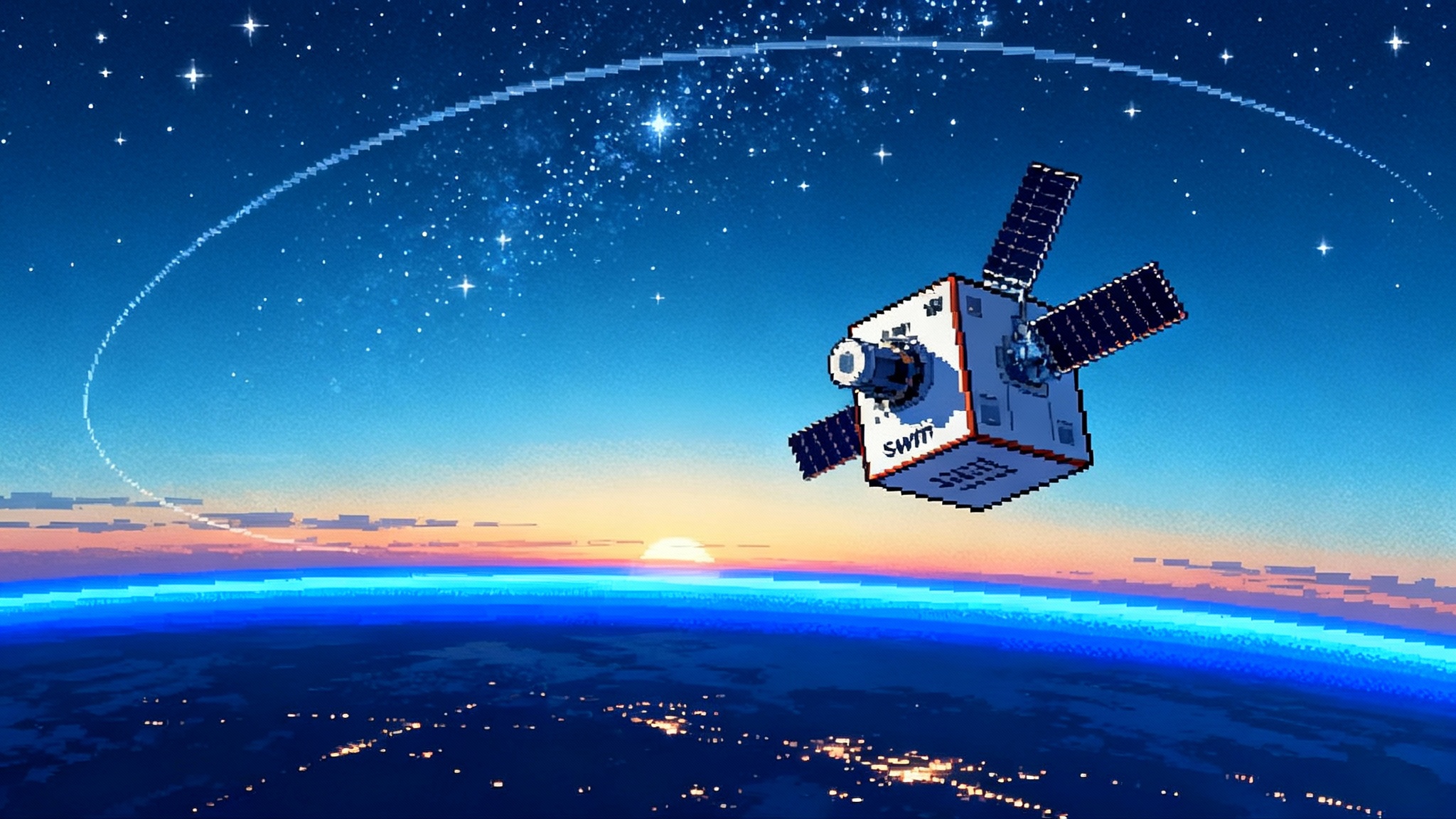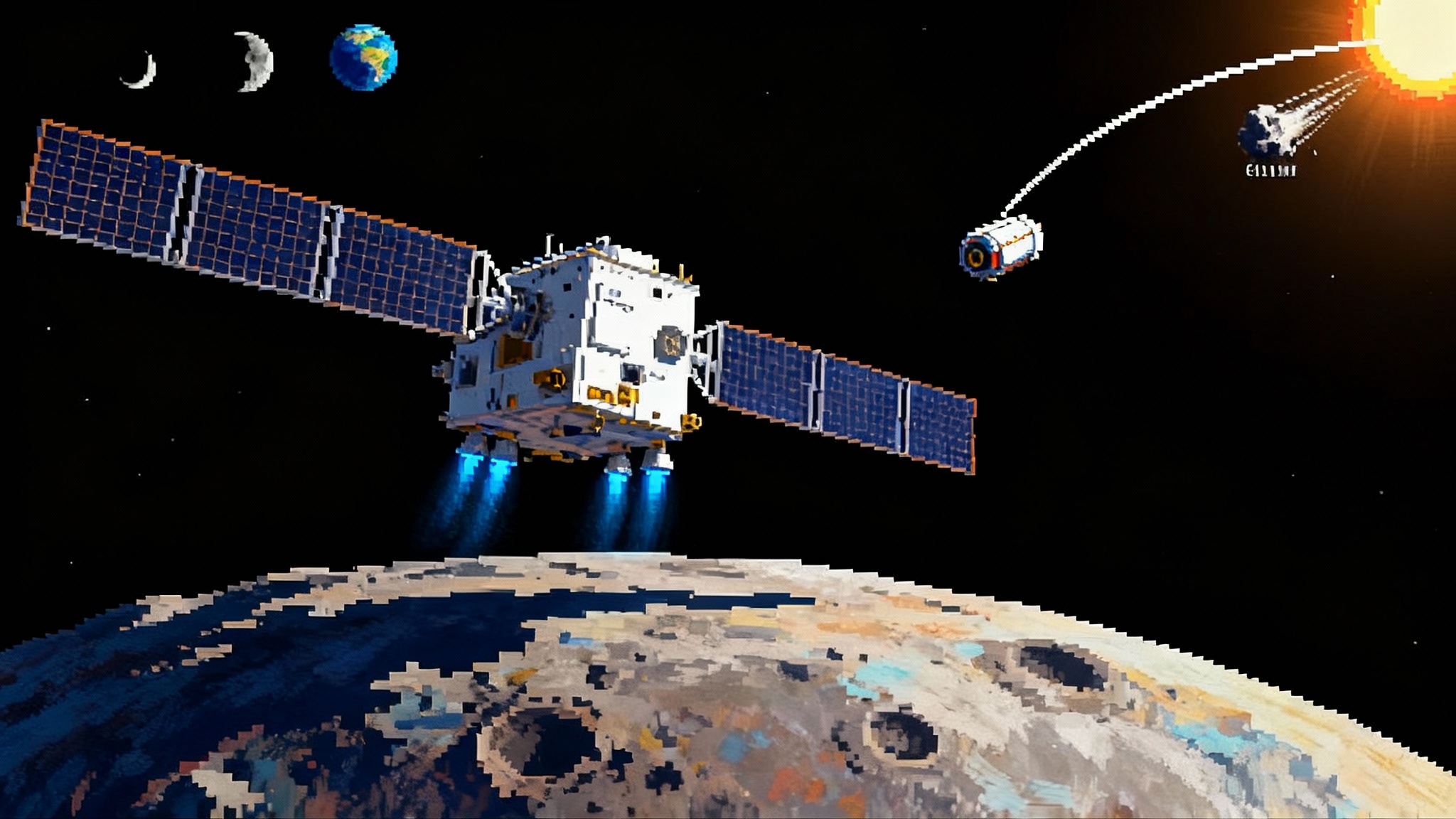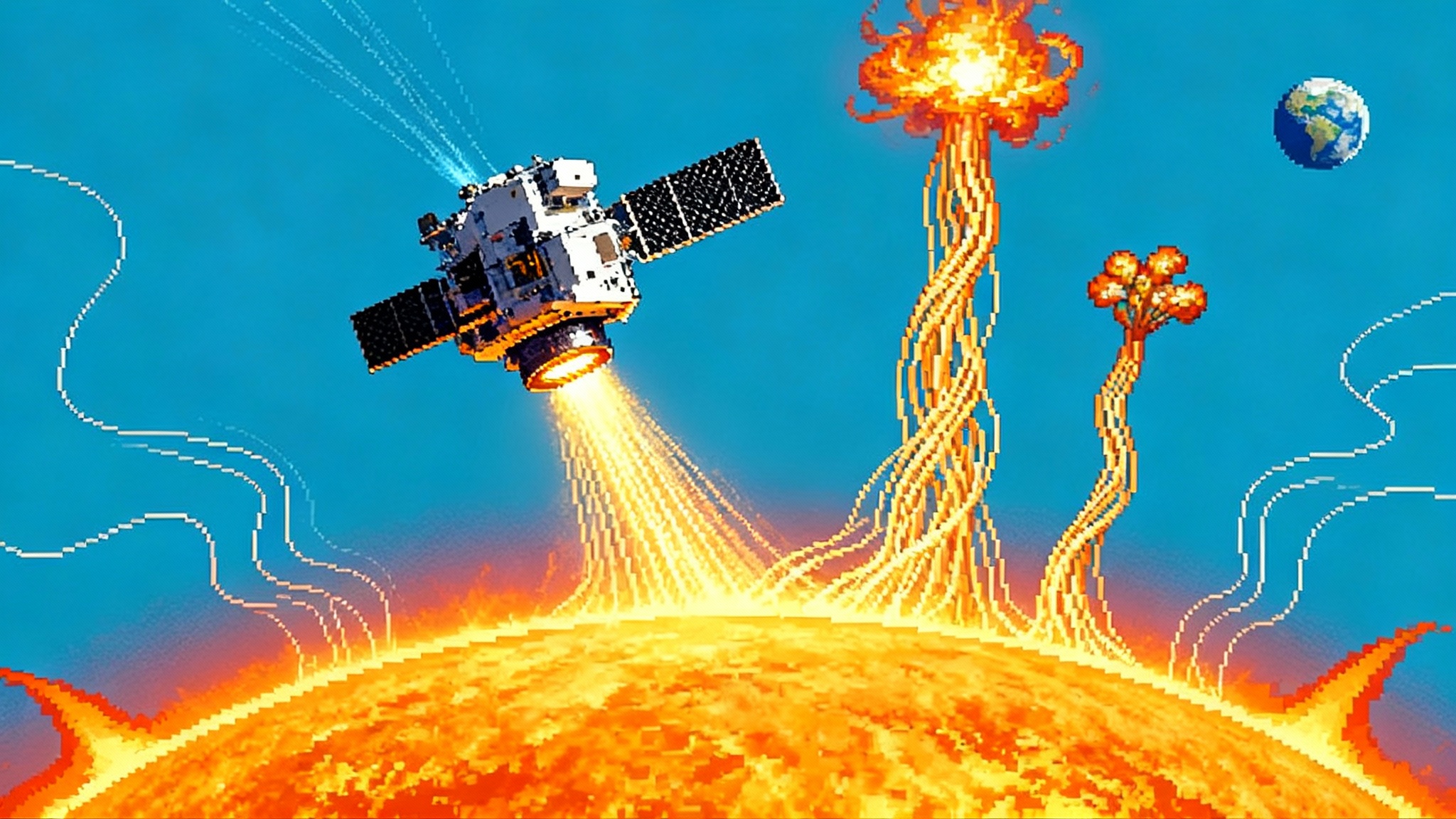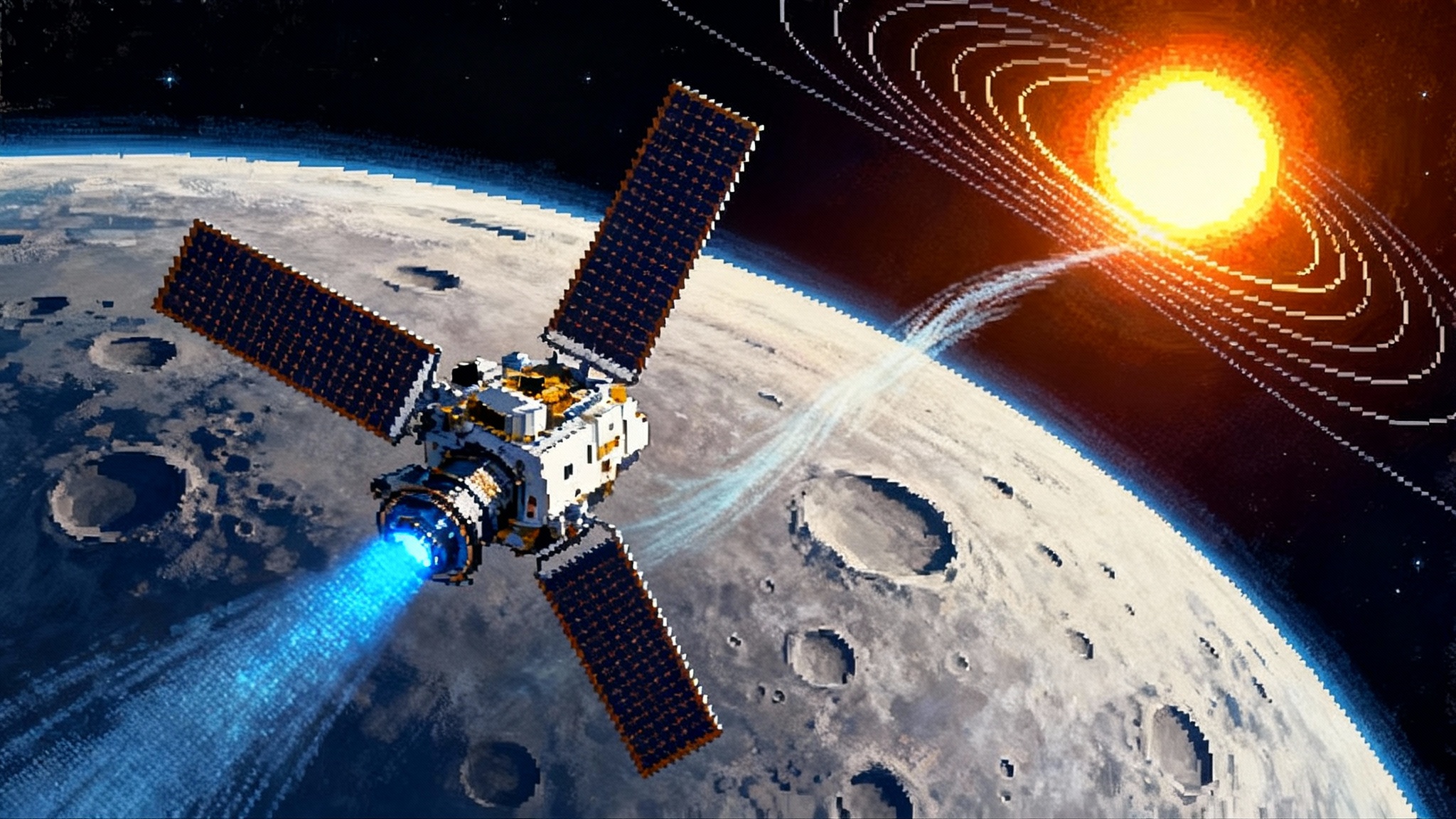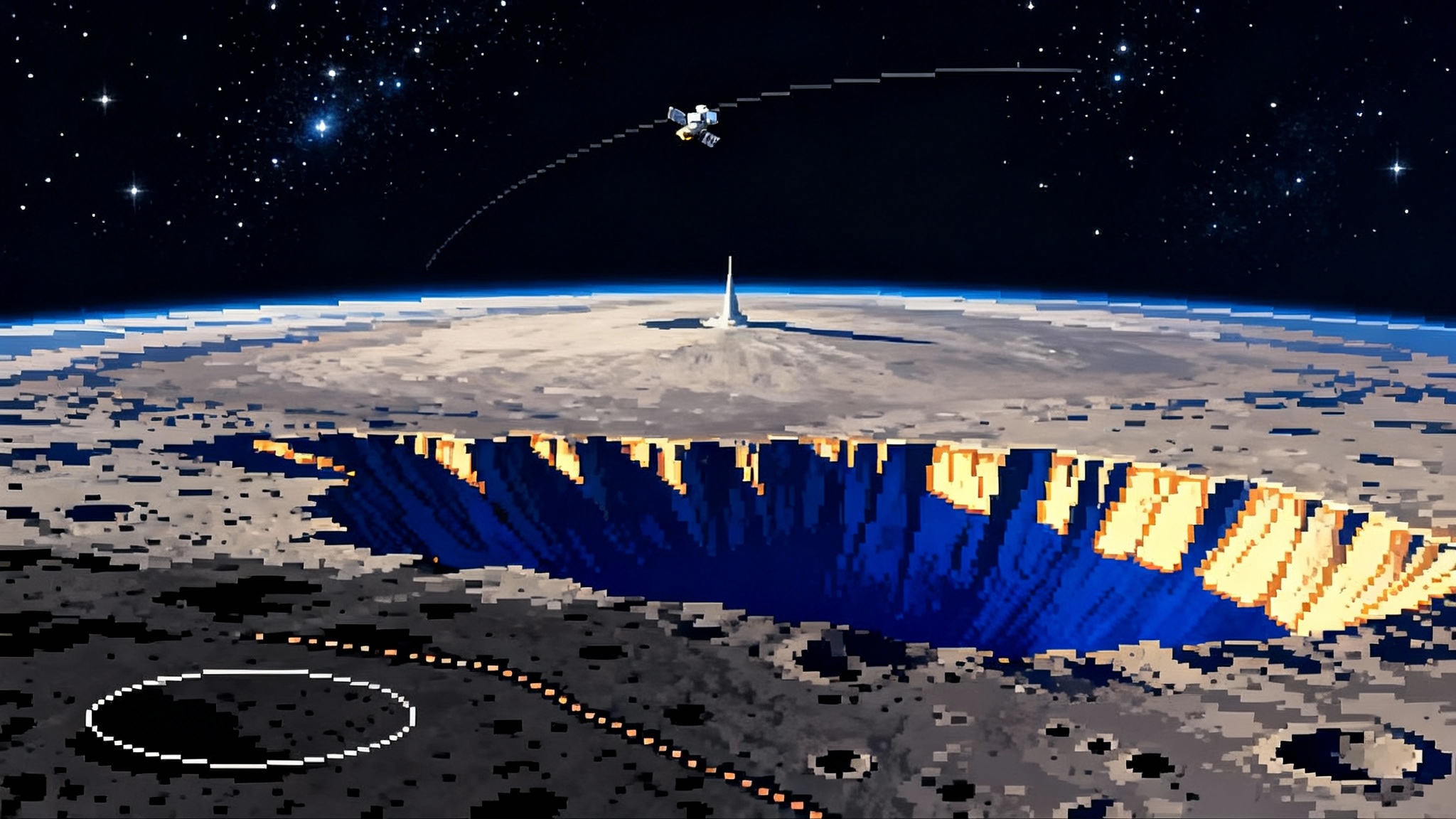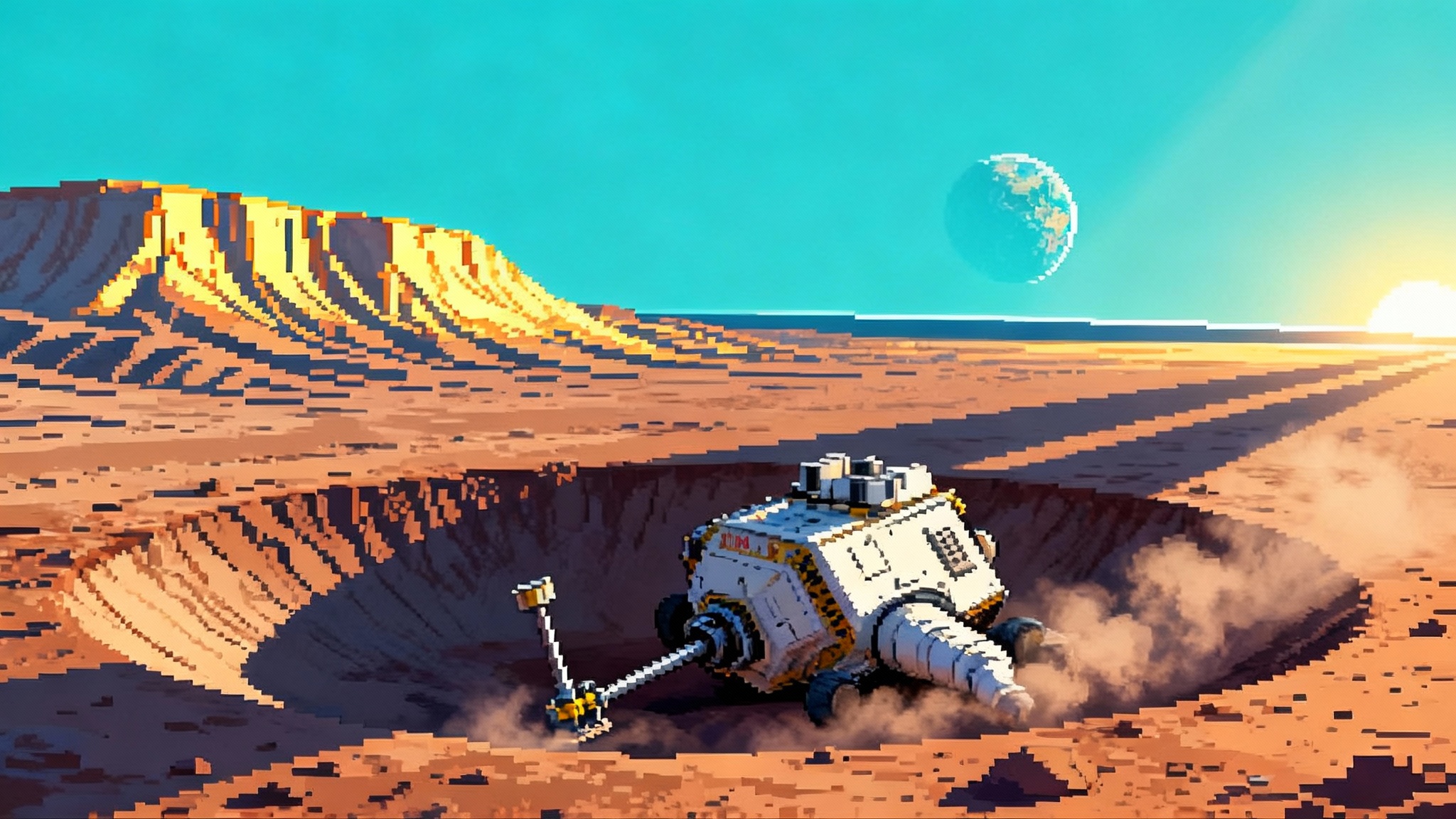VIPER Reboot: Blue Origin to land NASA’s rover in 2027
NASA has brought VIPER back by tasking Blue Origin to prepare a 2027 south pole delivery. The option depends on Blue Moon MK1 completing its first landing later in 2025, a pivotal test for lunar logistics.
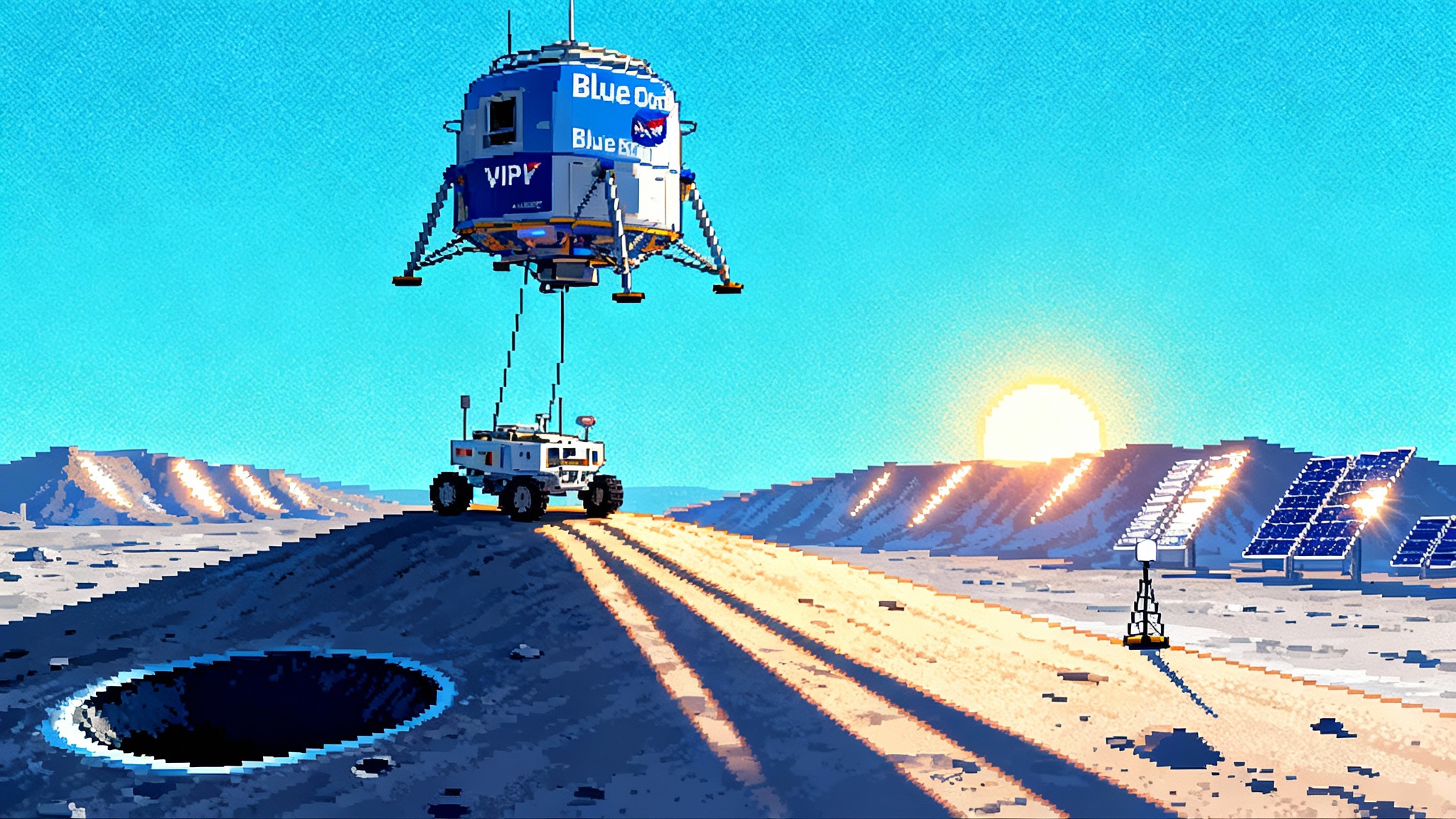
The news, and why it matters
NASA just brought VIPER back from the brink. On September 19, 2025 the agency awarded Blue Origin a Commercial Lunar Payload Services task order, valued at up to 190 million dollars, to carry NASA's ice-hunting rover to the Moon's south pole in late 2027. The award is structured with a base phase and an option. NASA will decide whether to exercise that delivery option after Blue Origin completes initial work and flies its first Blue Moon Mark 1 lander. The first MK1 mission, targeted for later this year, carries NASA instruments that study rocket plumes and provide laser targets for tracking. The fine print signals a clear strategic bet: if Blue Origin lands MK1 by late 2025 and the flight meets expectations, VIPER rides in 2027. That puts commercial capability at the center of how the agency plans to explore the south pole and build a sustainable presence there. See the details in NASA's release, which outlines the contract structure, timeline, and decision gate for the option to deliver VIPER in 2027: NASA selects Blue Origin for VIPER.
This is a reversal of fortune for VIPER. The mission was canceled in July 2024 amid cost growth and schedule trouble. That earlier decision came with an expectation that NASA would meet its volatile-mapping goals through other payloads. With the September 19, 2025 task order, the agency is refocusing on a mobile scout that can drive into the places where ice likely hides. VIPER's revival underscores a broader policy pivot: resource scouting is not a luxury, it is the start line for the Artemis era. For background on the 2024 cancellation, see NASA's announcement: NASA ends VIPER project in 2024.
What VIPER actually does
VIPER stands for Volatiles Investigating Polar Exploration Rover. In plain language, it is a prospecting robot that drills, sniffs, and maps water ice and other frozen compounds. It carries a drill capable of sampling below the surface and instruments that can identify volatiles through mass spectrometry and other measurements. VIPER is designed to operate for about 100 days and to traverse several kilometers. Its goal is not just to confirm that ice exists but to build a map people can use. How deep is the ice. How patchy is it. How much energy would it take to get to it. Where is the regolith firm enough for repeated traffic.
Think of the south pole like a mountain town where most of the basements are always cold and dark. Those basements are the permanently shadowed regions, the so-called cold traps. VIPER is a building inspector with a handheld drill, going door to door to check which basements have the water you can actually use. This is the kind of data that turns a scientific curiosity into a supply chain.
The contingency that matters: MK1 must fly
NASA's contract language is specific. The task order, internally named CS-7, funds design and demonstrations of how Blue Origin will off-load the rover from its lander. The option to actually deliver VIPER is tied to a review after MK1's first flight. This is not a small hoop. A working south-pole lander needs precision navigation near rough terrain, hazard detection, robust dust protection, and a reliable way to deploy heavy cargo to the surface. The first MK1 will not carry VIPER. It will deliver a stereo camera system that studies plume-surface interaction and a laser retroreflector. If the mission nails its objectives, NASA proceeds. If it stumbles, the agency can pause without stranding VIPER on paper yet again.
That structure is savvy risk management for three reasons:
- It decouples a complex rover from a first-of-type lander. The base work buys down interface risk without betting the whole mission.
- It forces early proof that the lander can handle south-pole conditions. Success in equatorial regions is not a guarantee at the pole, where lighting and terrain are far more challenging.
- It aligns incentives. Blue Origin has a strong business reason to demonstrate schedule reliability and surface performance that other customers can trust.
Site selection just got more interesting
Artemis planners have spent years eyeing south-pole locations like Shackleton's rim, Malapert Massif, and the Nobile region. Each spot is a trade among three things: sunlight for power, line of sight for communications, and proximity to ice-bearing shadows. VIPER's ground truth will sharpen those trade-offs in ways orbital sensors cannot. Recent farside samples rewrite the Moon's water map, and VIPER's local measurements will help reconcile orbital and surface scales.
Here are five concrete ways VIPER data would reshape the map:
- Depth and purity gradients: Orbital neutron and infrared data suggest ice is patchy and mixed with regolith. VIPER's drill and instruments will measure how deep you must dig and how clean the ice is. If the best deposits are shallow but dusty, you need simple excavators and heaters. If the ice is deeper but purer, you might prioritize drilling rigs and insulation.
- Trafficability: Wheel slip, sinkage, and compaction vary across the pole. The rover's traverses will reveal which slopes and soil types support repeated vehicle trips. That matters if you plan to shuttle tanks of harvested water from a shadowed crater to a sunlit power hub.
- Thermal cycles: Temperatures in the shadows can fall far below 200 degrees Celsius. That affects battery placement, lubricants, seals, and any pipeline you might run from a mining site to a processing unit. Real temperature logs and dust deposition rates will tell engineers which components need heating and how often.
- Hazard density: Small boulders and micro-craters accumulate differently in cold traps. VIPER imagery at rover scale will calibrate hazard maps used by landers, cranes, and later astronauts moving around on foot.
- Plume effects on pads: Dust erosion and ejecta from lander plumes can sandblast nearby hardware. The MK1 pathfinder's plume camera data, combined with VIPER's ground truth, will improve models of how far you need to separate landing pads, depots, and habitats when heavier vehicles arrive.
The bottom line: VIPER could let planners pick sites based on logistics, not just theory. You want a ridge with near-continuous sunlight and a downhill route into a shadowed pit where the ice is shallow and the slopes are drivable. You then place a landing pad and a depot at safe standoff distances so arriving cargo does not sandblast the mining gear. That level of specificity is how a base plan becomes an engineering drawing.
De-risking heavy robotic cargo
Delivering a half-ton rover is a test case for getting larger, more capable hardware to the surface. Blue Moon MK1 is designed as a workhorse lander. The VIPER option will require a safe off-load and a robust deployment sequence in low sun angles and extreme cold. That means ramps or a crane, a level landing posture, dust-tolerant mechanisms, and a sequence that works even if visibility is poor. For broader context on pad operations and dust control, see our lunar surface logistics reset analysis.
A few practical de-riskers stand out:
- Offloading choreography: The base CS-7 work focuses on how MK1 will off-load the rover. Expect tests of ramp angle limits, cable-free deployment options, and dust sealing for connector panels. A clean, repeatable choreography reduces the need for custom ground support equipment and makes future deliveries faster.
- Pad standoff and approach paths: The plume cameras and retroreflectors on the first MK1 inform how close heavy cargo can land without burying nearby systems in grit. That informs where you lay approach paths and how you plan traffic flow for rovers and cranes.
- Cold start procedures: VIPER will likely need heaters and staged wake-ups after the chill of descent and deployment. Practice here will help any future cargo with sensitive batteries or fluids, such as cryogenic storage tanks for water or oxygen.
- Communications geometry: Near the pole, Earth hugs the horizon. Antennas can have cutouts. The first MK1 mission's tracking aids will refine line-of-sight planning so that live telemetry is available through the riskiest moments of deployment.
If MK1 proves these are routine rather than heroic, it changes the risk profile for any payload in the half-ton to multi-ton class. That is the threshold where you move from demo boxes to real infrastructure, such as small excavators, surface power units, modular landing pads, and materials handling gear.
The ISRU-first signal
In situ resource utilization, or ISRU, means using what is already on the Moon for air, water, fuel, and building materials. VIPER is step zero in an ISRU supply chain. The rover's job is to tell engineers whether it makes sense to set up a mine, a small processing plant, and a transport loop. If the ice is plentiful at the right depth, you can imagine a near-term architecture like this:
- A prospecting phase with mobile scouting and small sample processing units. VIPER feeds the map.
- A pilot plant with a few kilowatts of power, insulated tanks, and a thermal mining head to vaporize and capture water. Output fills test canisters.
- A logistics loop that hauls water to a sunlit ridge for purification and electrolysis. Oxygen becomes stored oxidizer. Hydrogen is either vented initially or captured as storage and insulation improve.
- A standard cargo cadence that brings filters, piping, pumps, and power expansion kits as you scale.
The reason this is an Artemis priority is straightforward. Every kilogram of water made locally is a kilogram you do not launch from Earth. That reduces cost, saves payload mass for other equipment, and creates resilience if a launch slips. An ISRU-first mindset does not mean science takes a back seat. It means science is applied to make operations possible.
How the bet could accelerate a commercial lunar supply chain
If MK1 hits its marks in 2025, the signal to the market is immediate. There is a customer with money, a schedule, and a payload class that demands reliability. That attracts suppliers. As heavy lifters evolve in parallel, including the Starship V2 to V3 transition, demand will grow for payloads sized to predictable lander envelopes. Here are the likely early winners and what they should do next:
- Surface power and thermal management: Companies building solar arrays, energy storage, and radiators can package polar kits as products. Focus on systems with fold-out arrays that tolerate low sun angles and include dust shedding features.
- Dust mitigation and landing pads: Expect demand for sintered regolith tiles, deployable mats, and electrostatic dust repulsion coatings. Prototype kits that fit within a standard lander bay and can be installed by a rover with a manipulator.
- Mobility and materials handling: Builders of cranes, winches, and compact rovers should target interfaces that match MK1's cargo envelope. Publish your ramp angle and wheel load limits. Offer cold start packages.
- Communications and navigation: Polar relay packages that sit on ridgelines can sell capacity by the megabyte and the degree of elevation above the horizon. Integrate laser retroreflectors and navigation beacons so incoming landers can tighten their descent corridors.
- Sample handling and analytics: Off-the-shelf tubing, valves, traps, and ovens that work at polar temperatures will be the difference between an experiment and a pilot plant. Design for glove-free operation by a small robotic arm.
This is how a supply chain starts. A dependable truck arrives on a schedule. Vendors configure gear to that truck's dimensions and tie-downs. A regular cadence forms, and soon you have parts catalogs instead of custom one-offs.
What this means for south-pole site selection
A VIPER-first approach changes how teams weigh landing zones. Instead of starting with the prettiest illumination map, teams can start with a target ore body, to use a mining metaphor, then work backward to power and line of sight.
- If VIPER finds shallow ice in a shadowed alcove near Nobile, the base might pick a nearby ridge with month-long sunlight windows, even if it is not the absolute best on paper. The shorter the haul route, the smaller the fleet you need.
- If the best ice is deeper but very pure near Shackleton's rim, you might prioritize drill efficiency and thermal insulation over mobility, and choose a landing pad location that maximizes pad life and minimizes dust erosion, even if it lengthens the drive to the mine.
- If VIPER finds that trafficability is the limiting factor, teams might select a flatter, less icy area for the first base, with plans to pipe or ferry water from a secondary site after better roads or graded paths are established.
In all cases, first-hand data beats models. A few dozen carefully chosen holes and drive segments tell you more than another year of orbital analysis.
The bets and the brake pedals
No plan survives first contact with the Moon. Here are the realistic risks and how NASA's structure contains them:
- MK1 schedule slip: If the first lander slides into 2026, NASA can delay the VIPER option decision without committing the rover to a vehicle that has not flown. The rover's science window calls for a late 2027 landing, so the schedule has some room, but not a lot. The decision gate keeps the pressure on performance rather than hope.
- Descent and plume surprises: Even with strong modeling, polar lighting can complicate hazard detection. The plume cameras and retroreflector data on the first MK1 flight are meant to tune those models in the exact environment that matters.
- Off-loading complexity: A half-ton rover coming down a ramp in low sun is a choreography challenge. The base work under the task order is expressly focused on proving that choreography on Earth and in simulation, before anyone signs for the lunar delivery.
- Budget friction: A government task order with an option is not the same as a fully funded end-to-end mission. The structure is designed to preserve the science value while avoiding a repeat of the 2024 cancellation dynamic.
What to watch between now and 2027
- The MK1 pathfinder landing: It is the trigger. Watch for precision landing performance, dust ejecta observations, surface communications, and any notes on thermal behavior during local nightfall.
- Off-load tests and interface briefs: Expect updates on how the rover will be secured, powered during deployment, and commanded during first motion. Pay attention to ramp materials and dust sealing on connectors.
- Site selection shortlists: As more south-pole imagery and terrain models arrive, agencies will begin to talk about specific sites in terms of slopes, illumination arcs, and traverse plans to shadowed regions. VIPER's planned traverse will hint at the priority areas.
- Standardization moves: Look for draft standards on cargo bay dimensions, tie-downs, power connectors, and network protocols. A standard creates volume for suppliers and turns one-off payloads into product lines.
- Early ISRU demos near the pole: Expect small thermal mining heads, ovens, and condensers to show up on other CLPS flights, using VIPER's data to decide where to test.
The playbook for teams that want in
- Build to the south pole: Design for low sun angles, persistent cold, and abrasive dust. Use materials and lubricants rated for polar cryo conditions.
- Publish interfaces: Share your bay dimensions, mass properties, and deployment sequences. The more predictable your hardware, the easier it is to integrate into a routine cargo flow.
- Test plume compatibility: If you plan to operate near landing pads, show that your coatings, sensors, and moving parts can tolerate dust ejecta. Consider low standoff barriers or sacrificial shields.
- Invest in autonomy, not magic: The pole has choppy communications. Build onboard behaviors that handle comms dropouts and low-contrast lighting without heroic ground control.
- Plan logistics like a mine: Map haul routes, slope breaks, and turning radii. Decide where you stockpile regolith, where you place thermal processors, and how you backhaul water or oxygen.
The big picture
With one task order and a well placed option, NASA has aimed the lunar program squarely at operations. The agency is asking industry to prove that a commercial lander can not only touch down at the south pole but also deliver heavy, mobile cargo that does useful work. VIPER is the work. It is the survey that tells everyone where the ice is and how to get it. If MK1 sticks the landing and the option is exercised, the Moon starts to look less like a destination and more like a place with addresses, tools, and delivery windows. That is how a frontier turns into a neighborhood.
And if it does not go perfectly the first time, the structure still leaves room to learn and adjust. That is the quiet progress hidden in the fine print. A careful bet on capability, a scout to find the ore, and a plan that turns science into supply. If Artemis is going to last, it will be because missions like VIPER made the Moon useful and because commercial trucks like MK1 made it reachable, again and again.
